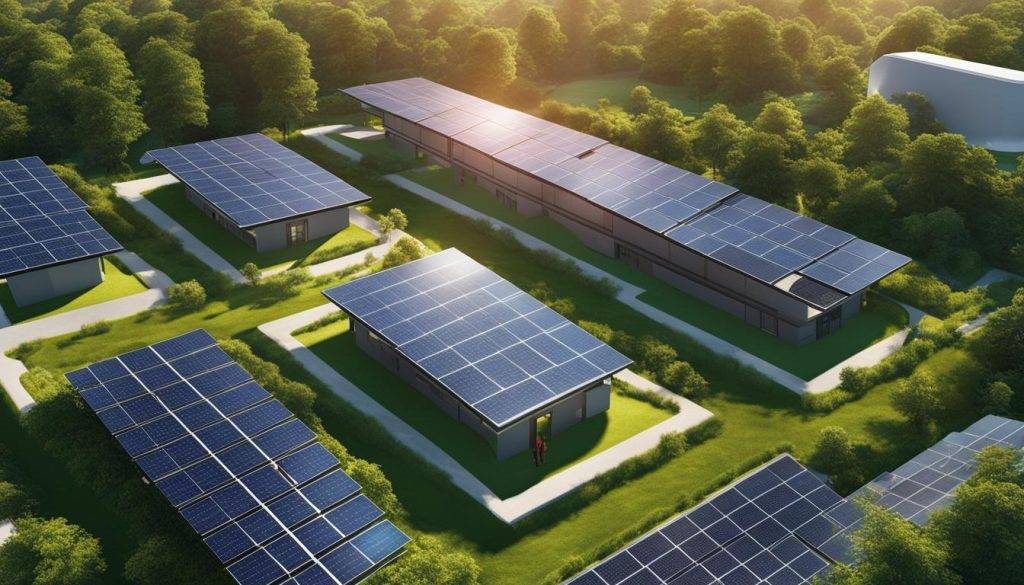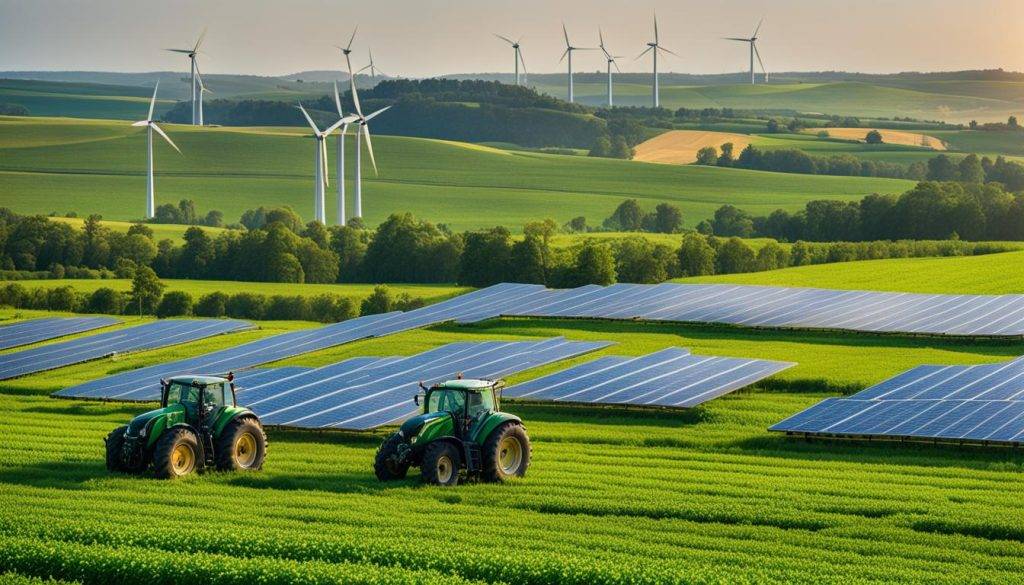- Auto Body Repair - Collision Center
- Leon Valley (210) 680-1987
- Walzem at IH 35 (210) 858-3630
- info@miraclebp.com

Safety First: The Role of Safety Inspections in Repairs

Navigating the Maze: Handling Insurance Claims for Repairs
In the bustling city of San Antonio, the auto body shop industry plays a significant role in keeping vehicles on the road and in top condition. However, with this activity comes a notable environmental impact. From fuel consumption to waste generation, the collision centers in San Antonio are contributing to the carbon emissions and pollution that harm our planet.
At [Auto Body Shop Name], we recognize the urgency to adopt green repairs and sustainable practices to reduce our environmental footprint. We are committed to minimizing the impact of our operations and promoting a greener future for our beloved city.
Key Takeaways:
- Construction in the auto body shop industry has a significant environmental impact, including fuel consumption and waste generation.
- By implementing sustainable practices, such as alternative fuel usage and recycling construction debris, we can minimize the environmental impact of repair work.
- Partnering with land developers and architects can lead to the construction of energy-efficient collision centers.
- By embracing green repairs, we can contribute to a sustainable future in San Antonio.
Solar-powered Microgrids for Sustainable Power Restoration
When it comes to sustainable power restoration, one of the most promising solutions lies in the use of solar-powered microgrids. These innovative microgrids, equipped with solar panels, offer a reliable and renewable source of energy during grid failures and outages. By harnessing the power of the sun, these microgrids provide uninterrupted electricity, reducing the reliance on traditional power sources and minimizing the environmental impact.
Solar-powered microgrids bring several advantages to the table. Firstly, they provide a resilient power supply, ensuring that critical infrastructure and essential services can continue functioning even during widespread power outages. Additionally, these microgrids contribute to a significant reduction in emissions, as they generate clean energy without relying on fossil fuels. This not only helps combat climate change but also improves air quality and public health in the long run.
Complementing solar-powered microgrids, energy storage systems play a crucial role in sustainable power restoration. These systems store excess energy generated by the microgrids and provide reliable backup power when needed. By utilizing energy storage, the strain on traditional power grids is reduced, creating a more resilient and sustainable energy infrastructure. Additionally, the integration of smart grid technology can further optimize power restoration efforts by enhancing fault detection, response time, and energy conservation.
However, it is not enough to rely solely on technology. Community education and awareness are vital in promoting and adopting sustainable power restoration practices. Public awareness campaigns can help educate individuals about the benefits of solar-powered microgrids and energy storage systems, encouraging them to embrace these green solutions. Furthermore, incentives such as tax credits or grants can incentivize individuals, businesses, and communities to invest in renewable energy technologies, creating a more sustainable and resilient future.

Conclusion
Solar-powered microgrids and energy storage systems offer a viable and sustainable solution for power restoration. By harnessing the power of the sun and utilizing advanced technology, these solutions provide uninterrupted electricity, reduce emissions, and contribute to a more resilient energy infrastructure. However, community education and incentives are essential to drive widespread adoption of these green technologies. By embracing solar-powered microgrids and energy storage systems, we can create a more sustainable future and minimize the environmental impact of power restoration.
Green Tech: Advancing Environmental Solutions
Green tech, also known as green technology, encompasses a wide range of environmentally friendly technology and practices that aim to reduce human impacts on the environment. The development and implementation of green tech have become crucial in addressing the pressing environmental challenges we face today.
One of the most significant areas of focus for green tech is renewable energy. Alternative energy sources such as solar and wind power have gained considerable momentum, offering a cleaner and more sustainable alternative to fossil fuels. By harnessing the power of the sun and wind, we can reduce our reliance on non-renewable resources and significantly lower carbon emissions.
Another essential aspect of green tech is the promotion of electric vehicles (EVs) and sustainable agriculture practices. EVs offer a greener transportation option by reducing greenhouse gas emissions and dependence on fossil fuels. Sustainable agriculture techniques, such as organic farming and precision irrigation systems, help minimize the environmental impact of food production by reducing pesticide use and conserving water resources.
The Role of Recycling and Carbon Capture
Recycling plays a vital role in conserving resources and reducing waste. By recycling materials such as paper, plastic, and metal, we can minimize the extraction of raw materials and the energy consumption associated with manufacturing new products. Recycling also helps divert waste from landfills, reducing methane emissions and mitigating the environmental impact of waste disposal.
Carbon capture technologies are another crucial aspect of green tech. By capturing and storing carbon dioxide emissions from power plants and industrial sources, we can help mitigate climate change. Carbon capture and storage (CCS) projects aim to prevent CO2 from entering the atmosphere, effectively reducing greenhouse gas emissions and their impact on global warming.

Investing in green tech is not only environmentally responsible but also presents significant opportunities for innovation and economic growth. By supporting and investing in companies that develop and implement green technologies, we contribute to a sustainable future while promoting job creation and economic prosperity.
As we continue to face environmental challenges, green tech remains a powerful tool in advancing environmental solutions. By embracing technologies that promote renewable energy, electric vehicles, sustainable agriculture, recycling, and carbon capture, we can collectively work towards a greener and more sustainable future.
Conclusion
Green repairs in the auto body shop industry play a crucial role in minimizing the environmental impact of construction and power restoration. Construction projects have significant environmental consequences, including fuel consumption, noise pollution, waste generation, and pollution from materials manufacturing. By embracing sustainable practices, we can reduce these impacts and work towards a more sustainable future.
Implementing measures such as reducing fuel consumption through alternative fuels and upgrading equipment, minimizing noise pollution by following local ordinances and communicating clearly, and reducing waste generation by using recycled materials and recycling construction debris can all contribute to minimizing the environmental impact of construction projects.
Furthermore, power restoration after outages can be achieved through sustainable practices such as utilizing solar-powered microgrids, energy storage systems, and smart grid technology. By educating the community about these green solutions and promoting their adoption, we can ensure a more resilient and sustainable power supply.
Green tech, including alternative energy, electric vehicles, sustainable agriculture, recycling, and carbon capture, plays a vital role in advancing environmental solutions. By investing in these technologies and practices, we can further reduce our environmental impact and contribute to a greener future.
FAQ
What are the environmental impacts of construction?
Construction has significant environmental impacts, including fuel consumption, noise pollution, waste generation, pollution from materials manufacturing, contaminated discharge, and damage from outdated techniques.
How can fuel consumption be reduced during construction?
Fuel consumption during construction can be reduced by using alternative fuels, hybrid equipment, and upgrading equipment.
How can noise pollution be minimized during construction?
Noise pollution during construction can be minimized by following local ordinances and providing clear communication to residents.
How can waste generation be reduced during construction?
Waste generation during construction can be reduced by buying used or recycled materials and recycling construction and demolition debris.
How can erosion and runoff be minimized during construction?
Erosion and runoff during construction can be minimized by implementing erosion control measures.
How can contaminated discharge be minimized during construction?
Contaminated discharge during construction can be minimized by proper storage and disposal of chemicals.
How can timelines be accelerated to reduce environmental impact?
Accelerating timelines can help reduce environmental impact by decreasing fuel consumption and noise.
How can energy-efficient buildings be constructed?
Energy-efficient buildings can be constructed by partnering with land developers and architects who prioritize sustainability.
How can fuel consumption and emissions associated with manufacturing be reduced?
Fuel consumption and emissions associated with manufacturing can be reduced by using sustainable materials and techniques.
What are solar-powered microgrids?
Solar-powered microgrids are equipped with solar panels and store and generate renewable energy to provide uninterrupted power during grid failures.
What advantages do solar-powered microgrids offer?
Solar-powered microgrids offer advantages such as resilient power supply, reduced emissions, and cost-saving benefits.
How do energy storage systems contribute to sustainable power restoration?
Energy storage systems provide reliable backup power and reduce strain on grids, contributing to sustainable power restoration.
How does smart grid technology optimize power restoration?
Smart grid technology enhances fault detection, response time, and energy conservation, leading to optimized power restoration.
How can the community be educated about sustainable power restoration practices?
The community can be educated through public awareness campaigns and incentives for green power restoration solutions.
What is green tech?
Green tech refers to environmentally friendly technology and practices aimed at reducing human impacts on the environment.
What are some examples of green tech?
Examples of green tech include alternative energy, electric vehicles, sustainable agriculture, recycling, and carbon capture technologies.
How does green tech reduce reliance on fossil fuels?
Green tech, such as alternative energy sources like solar and wind power, reduces reliance on fossil fuels and lowers carbon emissions.
How do electric vehicles contribute to reducing greenhouse gas emissions?
Electric vehicles help reduce greenhouse gas emissions by replacing traditional gasoline-powered vehicles with electric-powered vehicles.
What role does recycling play in green tech?
Recycling plays a vital role in green tech by conserving resources and reducing waste.
What is the purpose of carbon capture technologies?
Carbon capture technologies aim to remove and sequester greenhouse gases from the atmosphere, helping to mitigate climate change.
How can I invest in green tech?
You can invest in green tech by buying stocks or funds that support environmentally friendly technology and practices.


